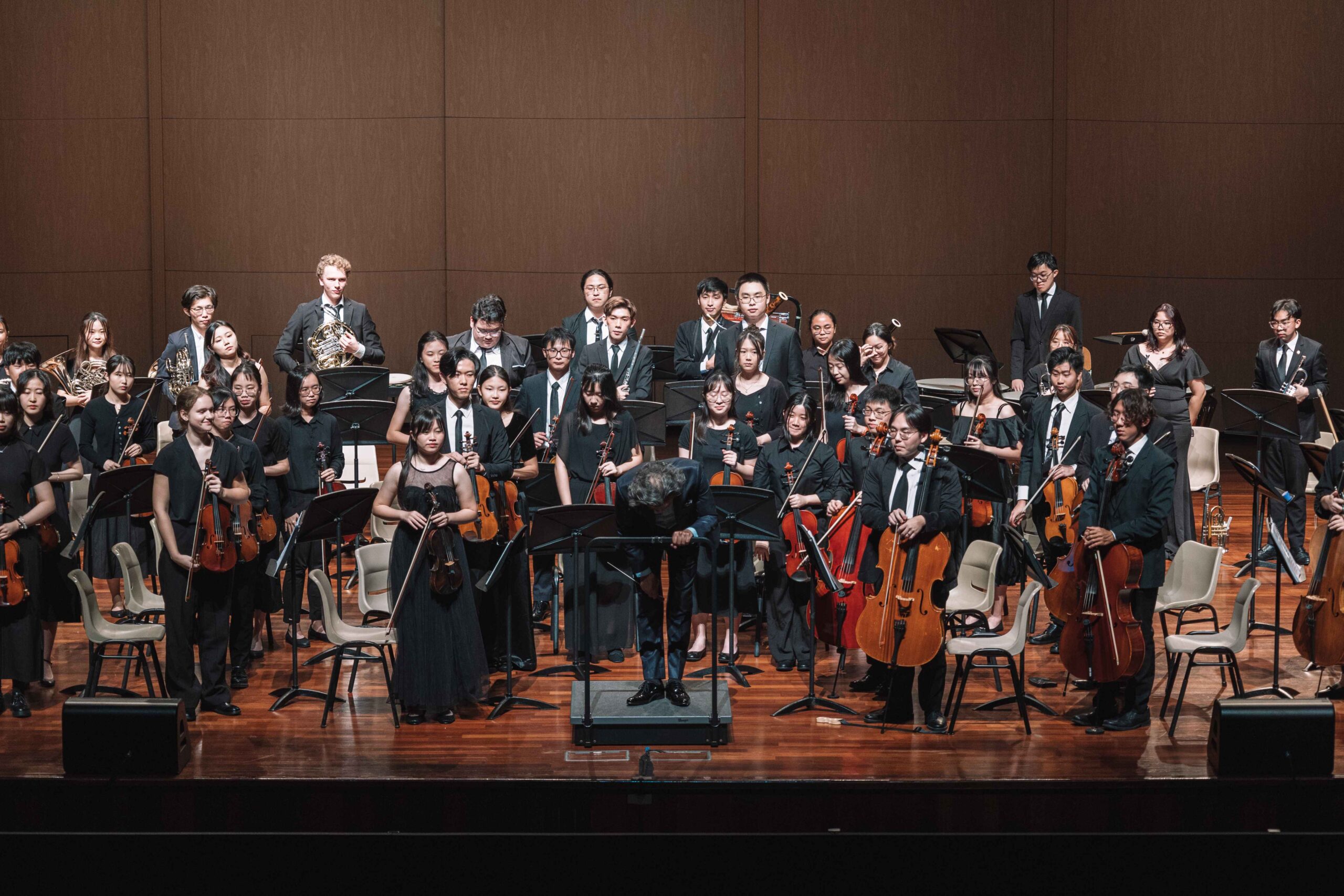
Photo: James/NTU CAC Media & IT (MIT)
On the evening of 24 October 2024, NTU Symphony Orchestra (SO) enchanted an audience at the iconic Nanyang Auditorium with their concert, titled Tonkunst.
Tonkunst is a German word that can be translated as “The Art of Tone”, carrying with it the notion that music is more than just sound that’s pleasing to the ears. Rather, it’s an art form that represents the human experience and expression. Lecia Ong, the chairperson of NTU SO, explained, “Our programme for this concert has elements of storytelling, so I wanted the name to reflect that.” Led by their conductor, Mr. Chan Wei Shing, NTU SO invited the audience to delve into Tonkunst, where symphonies were weaved into stories.
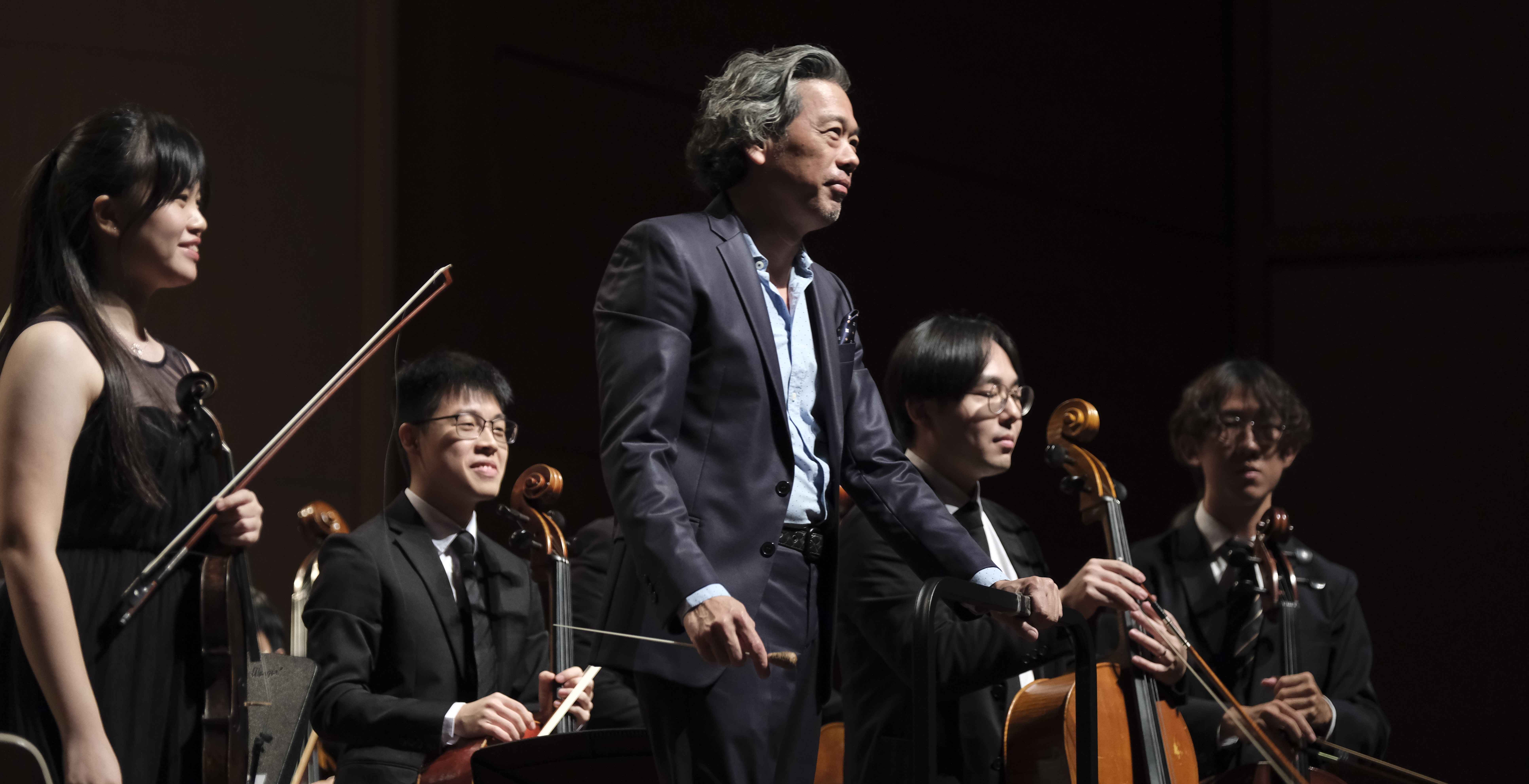
Photo: Haziq/NTU CAC MIT — Conductor Mr. Chan Wei Shing
The concert opened with the overture from The Barber of Seville, a comedic opera, scored by the Italian composer Gioachino Rossini. The opera follows a wily barber by the name of Figaro. Acting as a wingman to Count Almaviva, Figaro plots and schemes to help the Count pursue his one true love — Rosina. The overture features an iconic motif that most people have definitely heard. It was even referenced in a classic Looney Tunes episode — Rabbit of Seville. As the opening to a comedy, the quirky overture set a whimsical mood for the concert and closed with an intense crescendo, building anticipation for the rest of the concert.
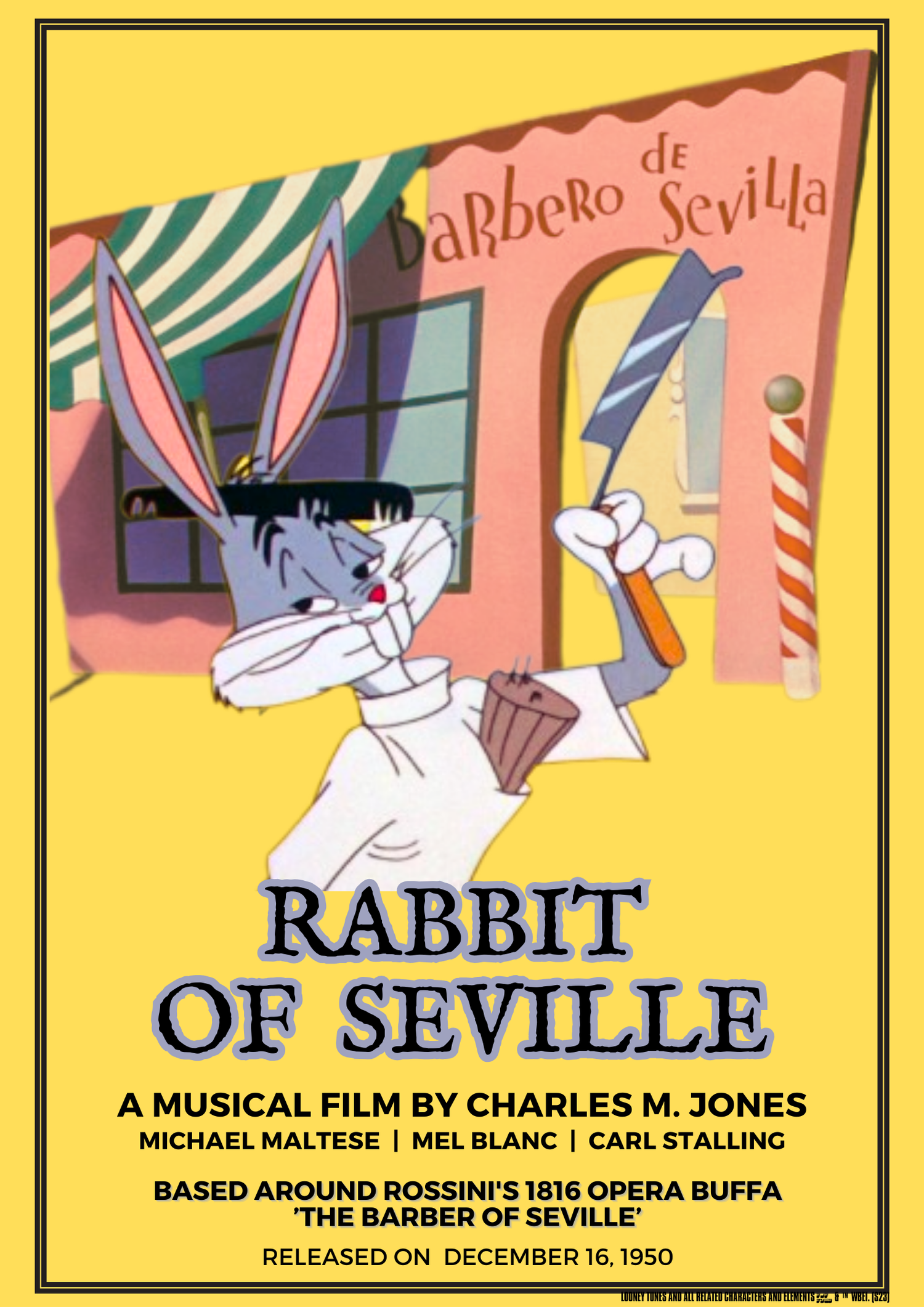
Image: Chuck Jones Gallery Studio
Up next was another well-known classic, this time from Pyotr Ilyich Tchaikovsky’s legendary ballet Swan Lake (“Act I Movement II, Valse”). Valse is a French term meaning “waltz”, reflecting how the piece is written in triple time with every first beat being accented. The piece starts with sharp, plucky notes (staccato), before coming in with the violin proper. What stood out to me was the percussion — the rhythmic chime of the triangle and the striking of the cymbals, pacing the performance as it slowly built to an emotional climax. As the horns sounded and the cymbals crashed, the piece reached its conclusion.
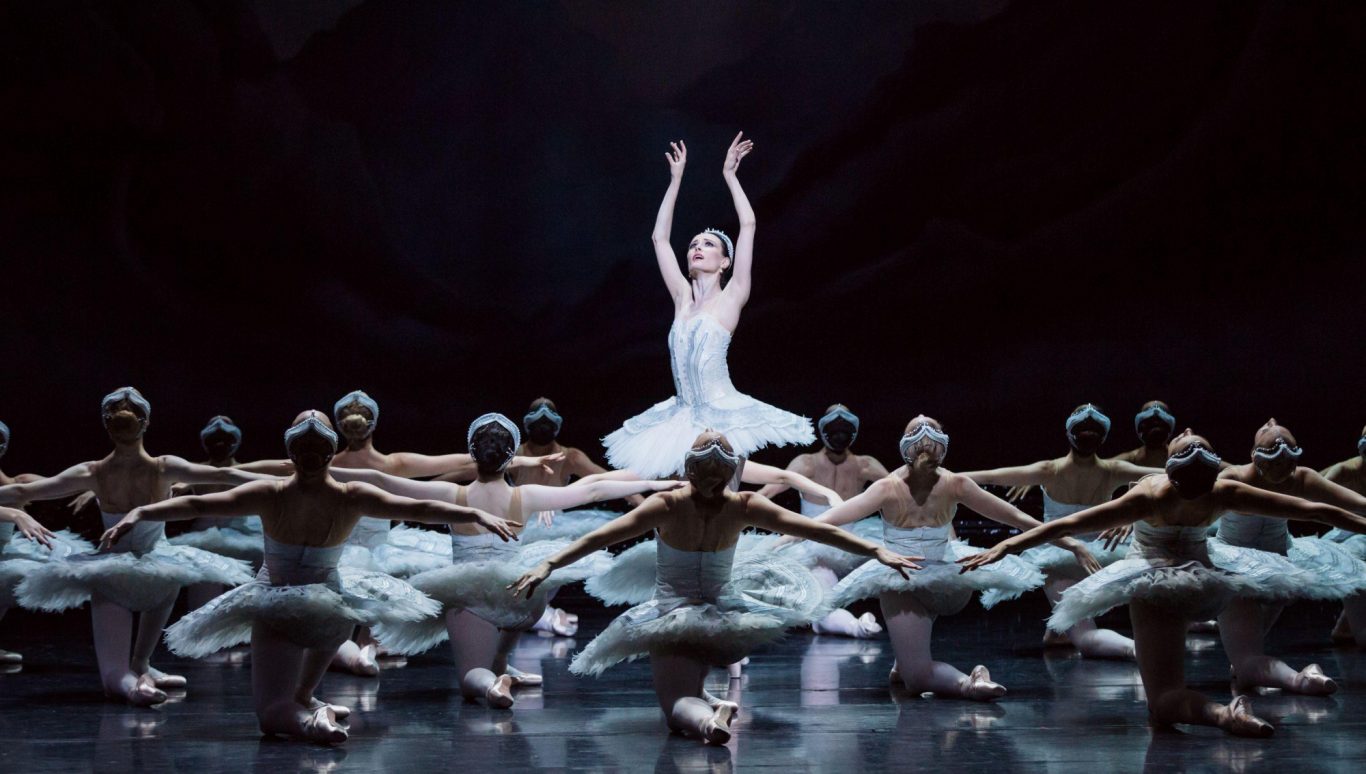
Image: The Australian Ballet — Swan Lake
The last piece before the intermission was Felix Mendelssohn’s Symphony No. 4 in A Major, I. Allegro Vivace, a symphony otherwise known as the Italian. A fun pop culture fact: this piece was actually featured in the movie Barbie in the 12 Dancing Princesses. Mendelssohn was a German composer and pianist, and his trip to Italy in 1830 served as the inspiration for this piece. Notable in the Italian are the clarity of the woodwind instruments lingering throughout the first movement, serving as a delicate and airy backdrop for the composition — Mendelssohn’s way of immortalising the azure skies of the Italian countryside that did inspire him so.

Image: Frimufilms/Freepik — Positano, Italy
For the finale, NTU SO presented a truly special theatrical experience with their rendition of the symphonic folk tale Peter and the Wolf, written and composed by Sergei Prokofiev. This piece is special in that it’s both a children’s story and a symphony. The concert’s emcee, Ye Seow Hui, doubled up as the narrator to recite the tale while the orchestra accompanied it.
In 1936, the Moscow Children’s Theatre tasked Prokofiev with writing a symphonic children’s story. It served as a way to teach children about instruments, embodied by how each character in the story is represented by a different instrument. Peter was played by the sharp and determined violins, his stubborn grandfather was the bassoon, and the firing of the timpani and bass drums belonged to the hunters. The flute, oboe, and clarinet represented the bird, duck, and cat respectively. Meanwhile, the wolf was played by “four big, ugly, smelly, and hairy French horns” (narrator’s words, not mine). The instruments played off one another while the narrator recounted the story, painting a performance that perfectly captured the orchestra’s vision of a magical world brought to life by symphony.
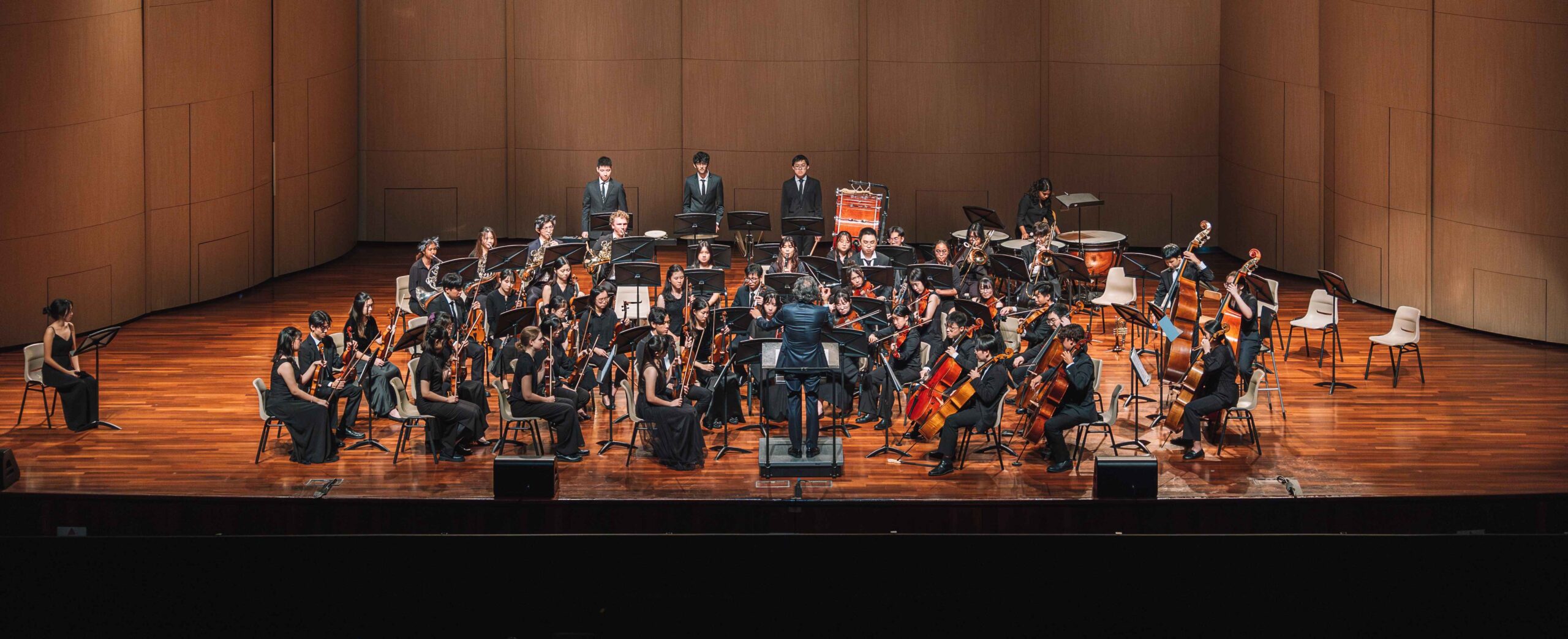
Photo: James/NTU CAC MIT — Peter and the Wolf
And just as I thought the curtains were about to fall on the magical night, the orchestra and their conductor surprised the audience with an encore of Swan Lake (“Scene”). The elegant yet melancholic symphony marked a bittersweet end to the night, and as the strings faded out, so too did Tonkunst come to a close.
As an audience member, I really appreciated the thought that NTU SO put into Tonkunst, from the careful selection of pieces, to the actual performances themselves. My personal favourite of the night was Peter and the Wolf — it sort of rekindled a sense of childlike wonder within me, and I look forward to seeing what NTU SO puts out next. Do check out their Instagram account (@ntusymphonyorchestra, embed link: https://www.instagram.com/ntusymphonyorchestra/) for updates on future performances.
Congratulations to the orchestra for making Tonkunst a success!
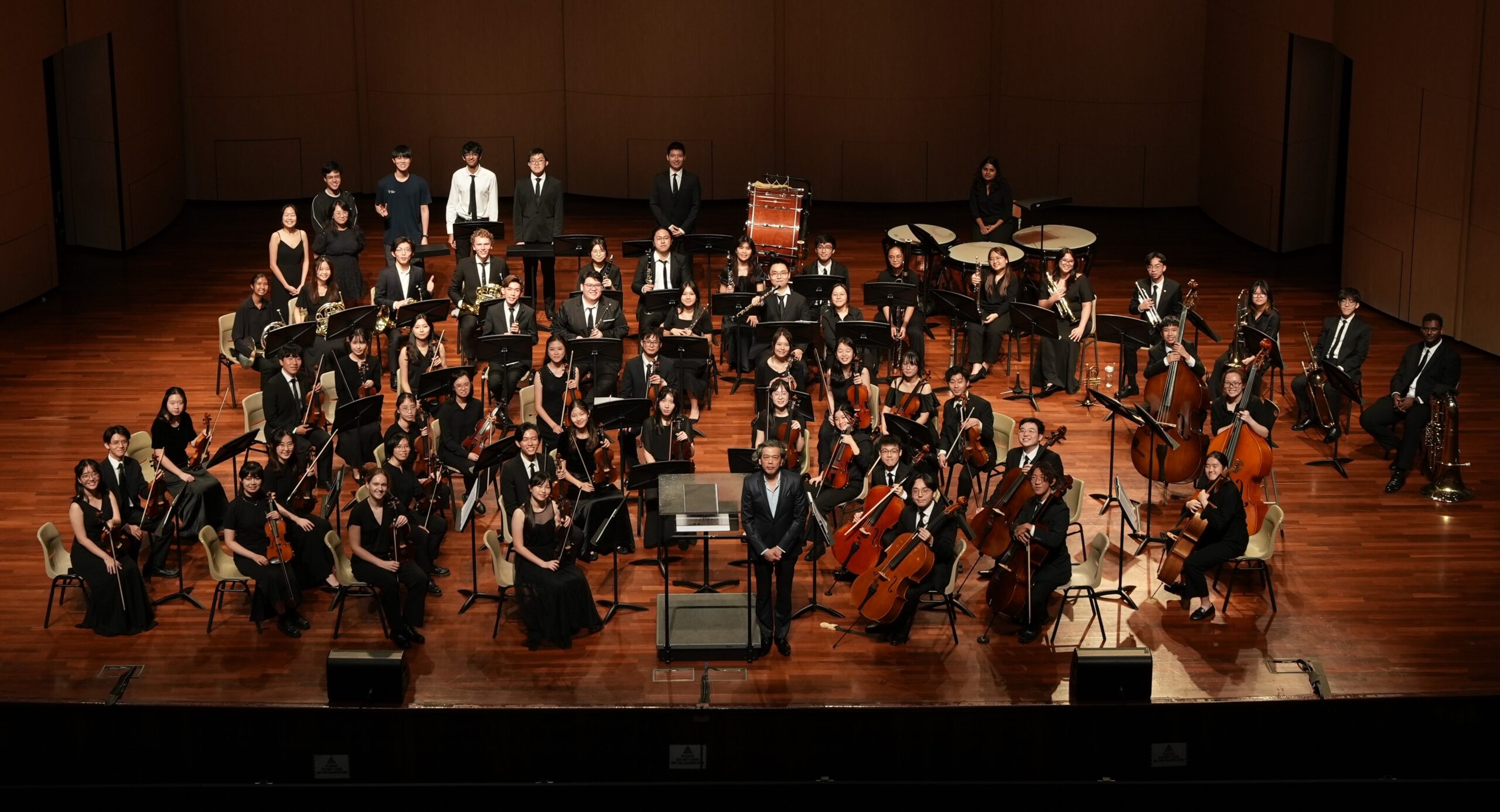
Photo: NTU CAC MIT
